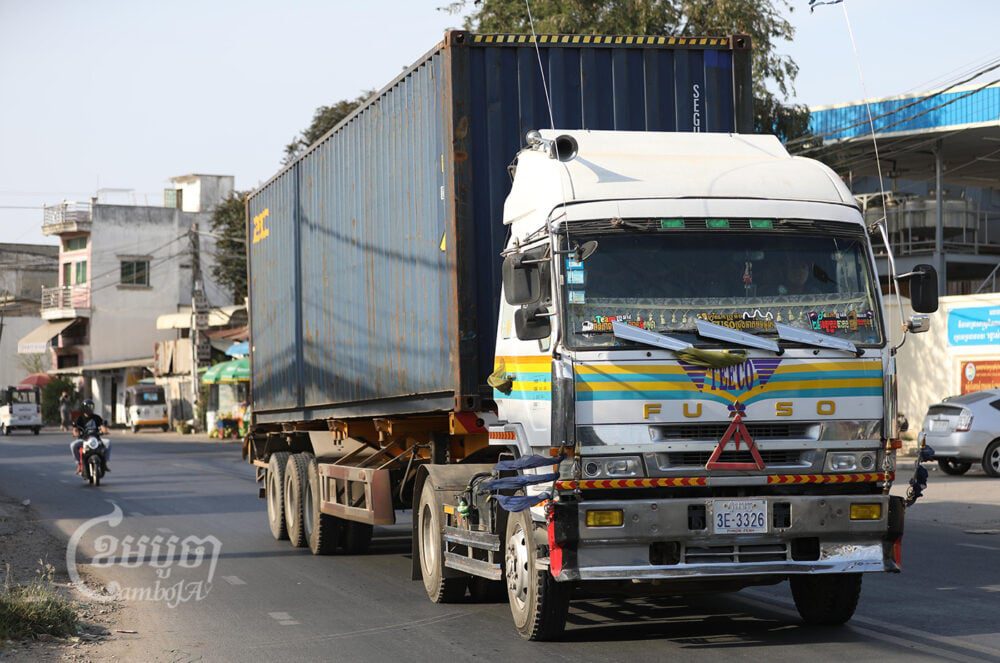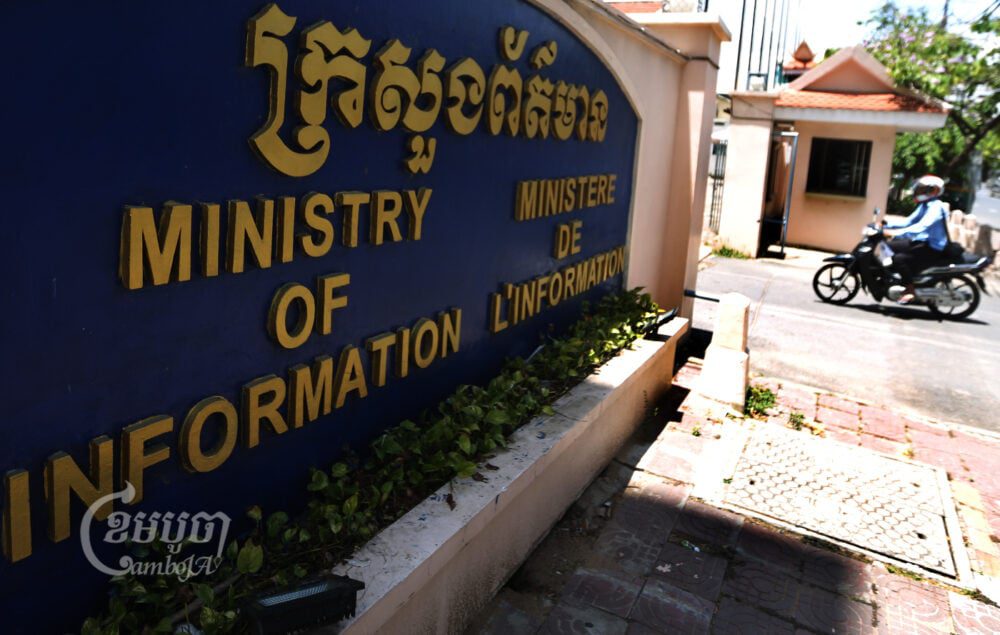Listen to the audio version of this article (generated by AI).
In a quiet corner of Krakor district, Pursat province, an assembly plant manufactures thousands of sport utility vehicles, or SUVs, and pickup trucks exclusively for the Cambodian market. Such a substantial investment is justified by the growing demand for such vehicles.
SUVs and pickup trucks belong to a class of passenger vehicles larger and heavier than a typical sedan. They are seen as a status symbol by Cambodians, even if they have questionable utility, being mostly driven in cities.
Consumer preference towards heavier and larger passenger vehicles is exacerbated by vehicle manufacturers’ push for enlarged car designs – a phenomenon called car bloat.
David Zipper, a senior fellow at the MIT Mobility Initiative, describes car bloat as “the continually expanding size of the typical American automobile [due to] carmaker profit, shifting consumer preferences, and loophole-riddled auto regulations.”
Car bloat hurts consumers worldwide by worsening fuel efficiency, making vehicles more costly to purchase and operate, and increasing pollution.
However, the overhead of this consumer trend does not only impact owners. The onslaught of large passenger vehicles is a shared burden for all urban community members.
In 2025, Cambodia has 304,989 heavy vehicles (weighing more than 2.50) registered nationally. Therefore, owners of heavy passenger vehicles in Cambodia’s urban centers should cover the costs of their vehicles’ negative externalities through a weight-based tax policy, which can better curb the trend of growing vehicle size.
Risks Imposed onto the Public
It is well established that heavy passenger vehicles pose increased risk to public health, strain public finances, and harm the environment. Even when tailpipe emission is absent, such as with electric vehicles (EVs), the heavier average weight can compound these issues.
Firstly, negative outcomes for public health are present across multiple dimensions. An obvious one is the heightened rate of serious injury and fatality when accidents occur due to increased vehicle weight and height.
According to the Insurance Institute for Highway Safety, the front end of pickups and SUVs with a hood height greater than 1.02m (40 inches) tall are about 45% more likely to cause fatalities in pedestrian crashes than smaller cars with a hood height of 0.76m (30 inches) or less and a sloping profile.
It is not only the tall profile that makes these vehicles more deadly to pedestrians, but also their weight. A comparative study of pedestrian fatalities in accidents involving sedans and SUVs found the risk was sometimes nearly twice as high with SUVs. At speeds of 32–62 km/h, 30% of SUV crashes resulted in a pedestrian fatality, compared to 23% for smaller cars. At 63 km/h and above, every SUV crash killed the pedestrian, compared to 54% of crashes involving smaller cars.
This finding is backed up by others; a research paper that analyzed 4.8 million automobile collisions revealed that a 500 kg difference in vehicle weight generates a 47% increase in fatality risk.
Additionally, large vehicles’ poor visibility and handling – especially in crowded urban settings – is concerning . The poor visibility of large cars often leads to them being more prone to hit pedestrians and motorcyclists.
“Pickups and other large vehicles routinely do worse in our emergency handling and braking tests,” said Jake Fisher, Consumer Reports’ senior director of auto testing.
Secondly, the inundation of city streets with SUVs takes a toll on public finances. This stems not only from their impact on public health but also from the heavier wear and tear on roads and other infrastructure, which requires more frequent repair and maintenance. In addition, infrastructure must be expanded to accommodate the growing size and weight of these vehicles.
Lastly, large internal-combustion engine (ICE) vehicles contribute to poor fuel efficiency, exacerbating air pollution. Worsening tire wear brought on by their heft produces micro-tire fragments, which contribute an estimated 6 million tons of microplastic contamination globally.
It’s imperative that Cambodia curbs the popularity of heavy passenger vehicles, mitigating their significant negative impacts on urban public health. One way to achieve this is through a mass-based excise.
Countering Consumer trends with Taxation
Cambodia can disincentivize the purchase of heavy passenger vehicles by revising its vehicle taxation regime to account for vehicle weight and size. Vehicle tax can help to redirect the external cost back onto drivers while also ensuring consumer trend shifts towards safer and more environmentally friendly options and even reduce car dependency overall.
Currently, application of annual passenger vehicle road tax is calculated based on engine size and production year according to a Prakas on Collection of Annual Tax on Means of Transportation in 2018.
| Annual Passenger Vehicle Tax in Cambodia | ||||
| No. | Cylinder Capacity “CC” | Manufacturing Year | ||
| < 5 years | 5-10 years | > 10 years | ||
| 1 | < 1500 cm3 | 150,000 | 100,000 | 80,000 |
| 2 | 1500 cm3 – 2000 cm3 | 200,000 | 150,000 | 100,000 |
| 3 | 2000 cm3 – 2900 cm3 | 600,000 | 400,000 | 250,000 |
| 4 | 2900 cm3 – 4000 cm3 | 1,600,000 | 1,000,000 | 600,000 |
| 5 | > 4000 cm3 | 2,000,000 | 1,200,000 | 800,000 |
| Notes: Fees are paid annually, and the unit prices are in Khmer Riel. | ||||
This not only disregards the detrimental effects of bigger, heavier cars – such as the massive Tundras, Rams, and Rangers pickup trucks – but it also encourages people to drive black smoke-spewing, decades-old diesel SUVs, which exacerbates negative environmental and social impacts.
The annual automobile road tax generates sizable revenue for Cambodia, earning $93 million between June and November 2021 and earning $100 million between June and November 2022. It is, however, nowhere near enough to compensate for the aforementioned externalized costs.
For instance, the scale of economic loss in Phnom Penh alone has recently been estimated at USD 500 million to USD 700 million annually, driven by time lost in traffic congestion, traffic accidents, pollution, and increased vehicle usage. These costs are also borne across other parts of the government budget, including healthcare, social assistance, and infrastructure.
Hence, owners of heavy passenger vehicles pass down externalized costs onto the rest of society, and these costs far outweigh the revenue generated.

Taxation based on vehicle weight and size.
Addressing this imbalance requires the cost to be passed back onto vehicle owners and ultimately curb private vehicle usage in Cambodia. Thus, the national passenger vehicle taxation regime should be recalibrated to focus on vehicle weight and size. Such an approach has been implemented in cities and countries around the globe.
France has seen a recent surge in large car purchases and is introducing a weight tax on vehicles heavier than 1,800 kilograms, primarily targeting SUVs and large four-wheel drives. Smaller, lighter vehicles – typically between 1,200 and 1,400 kilograms – are exempt. This measure aims not only to curb the use and import of large vehicles but also to incentivize local carmakers to avoid car bloat.
Even in the United States, where car bloat initially took hold, cities such as Washington, DC are increasing registration fees, with the biggest increase aimed at a new category created for SUVs and trucks weighing over 6,000 pounds. Their owners now have to shell out $500 per year. For cars between 5,000 and 6,000 pounds, the fee is set to $250 annually, compared to 72$ per year for a smaller car.
Meanwhile, Norway takes a simpler, more pragmatic approach: a weight tax of $1.10 per kilogram is applied to vehicles above the first 500 kilograms.
Building on these initiatives, Cambodia should revise its annual passenger vehicle tax policy to more proportionally reflect the cumulative impacts of heavy passenger vehicles.
To achieve this would require the replacement of vehicle categorization by engine size with one based on vehicle weight in a multi-tier configuration. In practice, this would entail the adoption of four passenger vehicle weight categories: light (<1300kg), medium (1300kg-1799kg), heavy (1800kg- 2299kg), and very heavy (2300kg>) for ICE, hybrid and electric passenger vehicles.
| Proposed Passenger Vehicle Tax Classification | ||
| No. | Vehicle Weight Category | Passenger Vehicle Weight |
| 1 | Light | <1300 Kilogram |
| 2 | Medium | 1300 Kilogram – 1799 Kilogram |
| 3 | Heavy | 1800 Kilogram – 2299 Kilogram |
| 4 | Very Heavy | 2300> Kilogram |
The price should be relatively affordable for lighter vehicles in the first two categories and target excessively heavy passenger vehicles with higher costs in the third and fourth categories.
However, this proposal does not impact the annual tax for freight vehicles, which is considered separately in the 2018 announcement.
Secondly, passenger vehicles should continue to be categorized by age, but with higher fees for older models while new vehicles remain more affordable. This implements the “polluter pays” principle: older, second-hand vehicles bear higher costs to reflect the greater pollution they generate.
Doing so will not only curb the trend toward larger, heavier vehicles but also generate additional government revenue to help offset the problems these vehicles cause. The financial burden is thus placed on individuals who choose to purchase large passenger vehicles, rather than on those affected by their negative impacts.
The increased environmental, financial, and public health impacts caused by heavy passenger vehicles are passed down to society, and these costs far outweigh the revenue generated in the current vehicle tax scheme.
Addressing this imbalance requires the cost to be offset by owners. Therefore, adopting a tax policy that targets the weight of passenger vehicles is better suited for extracting fair compensation.
Note: Aronsakda SeS is a Research Fellow at the Future Forum, a public policy think tank based in Phnom Penh.
Sambath Chhum is a young research fellow from Future Forum’s 2023 cohort.
This article was written as part of the Future Forum’s Inclusive Policy Fellowship, an endeavour supported by the Australian Government through The Asia Foundation’s Ponlok Chomnes II: Data and Dialogue for Development in Cambodia.









